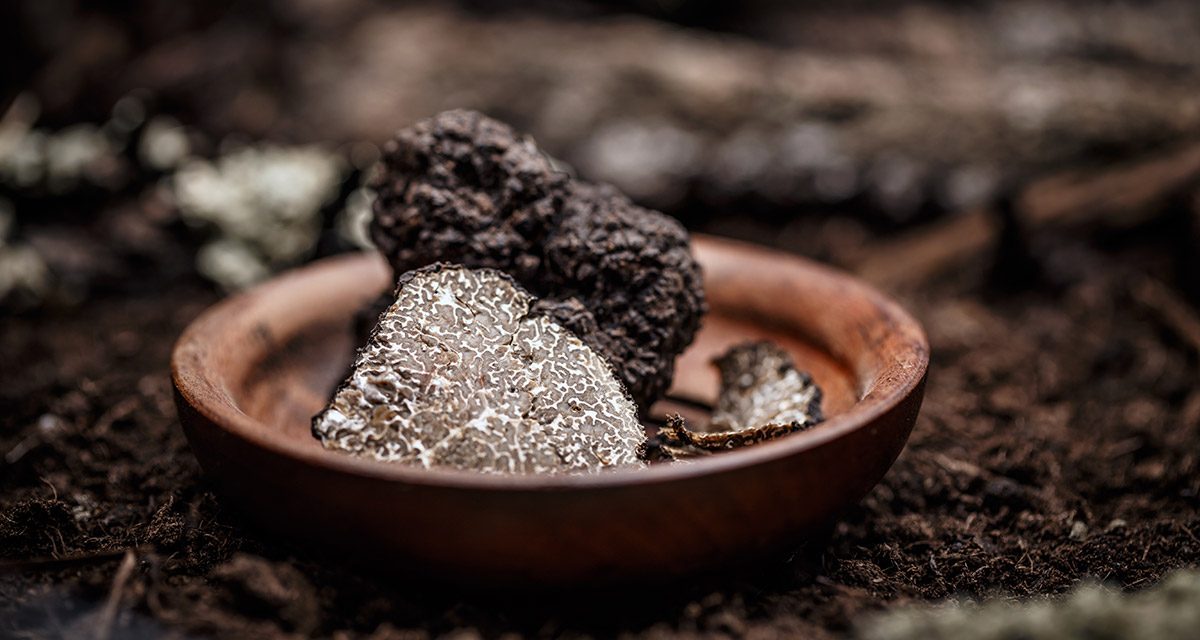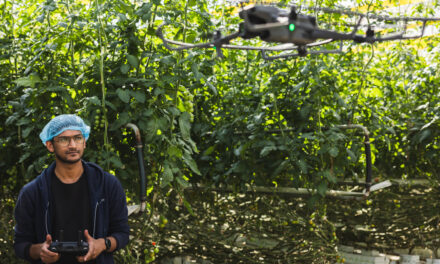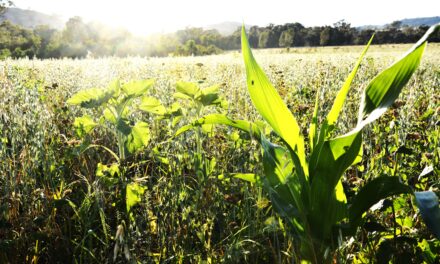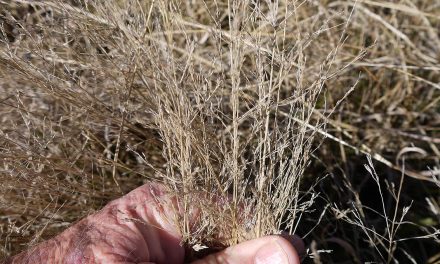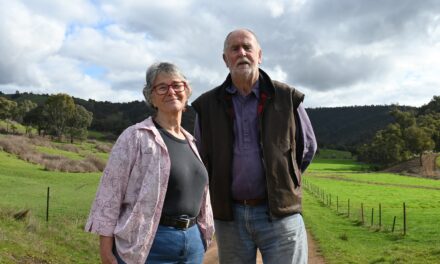This year, Australia will produce about 12 tonnes of truffles, most of which will be exported, with about three tonne consumed locally.
For Wayne Haslam of Blue Frog Truffles this international recognition shows only how well Australia is performing in the industry.
“New South Wales has the largest number of growers, although these are mostly smallhold growers, Western Australia has a lot of larger commercial growers, so we are a growing country in this industry,” he said.
Wayne first began producing truffles in 2007, alongside wife Lanie and son Justin.
“It was a retirement exercise really; we got a little block in the country just north of Canberra in Sutton. I was looking at ways to use the land effectively and prosperously and to give me a retirement activity,” he said.
“I looked at grapes, but luckily all my friends talked me out of that being a bit too intensive.”
“I also looked at olives and at that stage in early 2000 there weren’t really any firm views of what to grow in the Canberra area.
“I heard about truffles and I thought that sounds like a great option, and with a little bit of research, I realised there wasn’t as much work involved in its production, so I planted my first lot of trees in 2003.”
Truffle is a mycorrhizal fungus which grows in a symbiotic relationship with suitable host trees, commonly English oak, Holm oak and Hazelnut.
While the average truffle takes about five to six years to produce, when Wayne planted his first tree, luck was on his side and he had his first harvest after four years in 2007.
“And I’ve been harvesting ever since,” he said.
“I started out with 900 trees which consisted of about two hectares. It’s a great crop for diversification on the farm.”
For truffle growers in Australia, to make it commercially viable an average of 200 to 300 trees need to be planted.
While Wayne says that there is no specific formula in planting the trees, it is important to see the contour of the land to take greater advantage of catching the natural rainfall.
“Rather than just planting them in straight rows, like you would for mechanical harvesting, it’s better to just gauge where they would most prosper ̶ despite early industry recommendations,” he said.
“You need about 25 sq m/tree for them to grow easily.”
“There’s still a lot we don’t understand about truffles. We rely heavily on the experience and research from Europe, particularly France.
“The French started cultivating them away from their native truffles in the late 60s or early 70s, now in Spain truffles are a government subsidised business.”
Soil is one of the key factors for growing truffles and particular soils work better than others. Truffles are very tolerant of soil similar to grapes.
“In the European countries, the pH level is about seven-and-a-half to eight, so most of our Australian soils are acidic,” he explained.
“Which means we have to create those conditions by adding heavy amounts of lime ̶ about 50 tonnes/ha.”
“This is added to the top 2m because that’s where the truffles grow.
“The tree roots are infected with the truffle mycorrhiza. The trees create the symbiotic relationship with the truffle, where they feed carbohydrates into the truffle and in return the truffles give the trees minerals.”
The soil must be monitored every three to four years, to make sure that there is the right amount of calcium in the soil and the correct pH.
Irrigation is also a contributing factor, “You really need to irrigate them for two reasons ̶ you need to drought proof your small seedlings when you plant them, and then in the hot dry summers you need to supplement the rainfall to make sure they grow.”
- The truffles fruit in late spring, grow during the summer and autumn, and mature with the onset of winter.
- They are harvested using trained dogs from May to August, depending on the season and location.
- Like many exotic flavours, truffles can be an acquired taste, it is generally nutty in flavour, but then taste is 90 per cent aroma.
As a result, he established the Australian Truffle Growers Association in 2006. Now, more than half of the Australian truffle growers are members.
“In the early years, some of the inoculated trees that were being used were imported from Europe and weren’t suited to the Australian climate. So when it came time to harvest, they weren’t producing at all,” he explained.
With the help of their European counterparts, the Australian Truffle Association established certified growing trees which can now be purchased in Australia.
Wayne now has more than 1800 trees and has been a pioneer for the industry. He was one of the instigators behind the Canberra Truffle Festival, which began in 2009, “And it’s been going great guns since.”
Although Wayne doesn’t have his own dogs, he uses contractors which are becoming increasingly popular in the truffle growing areas.
“I travel a bit so it’s a bit difficult when you have a dog,” he said. “I think it’s important to have contract dogs in the industry, specifically trained for the detection of truffles.”
“Of course, training those dogs is no different to any other detection dog, whether it’s drugs or bombs it’s the same sort of principles.
“If you have dedicated dogs, you have more of a chance for success during harvest.”
Wayne believes that any dog can be trained to detect truffles, but the working dogs are more adept to the task.
“If you have dogs and love dogs you can train them to find truffles,” he explained.
“Anybody can train a dog to be a truffle dog, but you’re better off with a working dog because they know when it’s playtime and when it’s work time.
“Some of the other breeds tend to be a bit lazy and get bored with it.”
Climate is also an important factor and Australia has a good amount of the Mediterranean in it.
“It’s about hot summers and cold winters, so this is anywhere from the lower area of Queensland all the way into Victoria,” he said.
“If you’re around an area where you have seven or eight frosts, alongside nice hot summers, that means you have perfect truffle growing country.”

